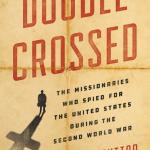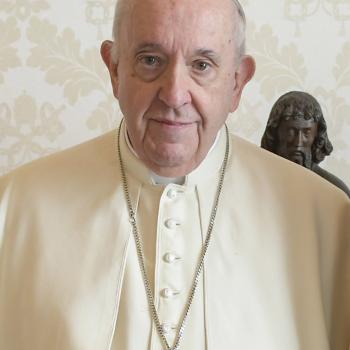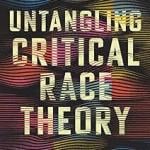According to the General Social Survey (GSS), 78% of evangelical Protestants say they “have been ‘born again’ or have had a ‘born again’ experience—that is, a turning point in your life when you committed yourself to Christ.” As political scientist Ryan Burge recently explained in Christianity Today, that number has actually gone up somewhat over the last thirty years… but not nearly as much as it has among three other groups that the GSS doesn’t equate with evangelicals: black Protestants, mainline Protestants, and Roman Catholics.
| Religious Group | % “Born Again” (1988) | % “Born Again” (2018) |
| Evangelical Protestant | 68% | 78% |
| Black Protestant | 60% | 80% |
| Mainline Protestant | 28% | 40% |
| Roman Catholic | 14% | 28% |
How can this be? Isn’t evangelicalism’s emphasis on a “turning point” experience what helps to set it apart from other Christian — other Protestant — traditions?
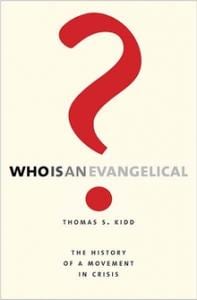 For example, consider the most recent study of evangelicalism by one of this blog’s founders. “What does it mean to be evangelical?”, asks Thomas Kidd. “The simple answer is that evangelical Christianity is the religion of the born again… being born again is the conversion experience that defines what it means to be an evangelical.” Kidd is defending the primacy of conversionism, the first element in David Bebbington’s much-debated, still-influential “quadrilateral of priorities that is the basis of Evangelicalism.”
For example, consider the most recent study of evangelicalism by one of this blog’s founders. “What does it mean to be evangelical?”, asks Thomas Kidd. “The simple answer is that evangelical Christianity is the religion of the born again… being born again is the conversion experience that defines what it means to be an evangelical.” Kidd is defending the primacy of conversionism, the first element in David Bebbington’s much-debated, still-influential “quadrilateral of priorities that is the basis of Evangelicalism.”
Given the increasingly negative reputation of evangelicalism, I would have guessed that fewer non-evangelicals are using this kind of language, not more. So what should we make of “born again” getting a new birth in American Christianity?
At the very least, it may be yet one more example of how permeable are the boundaries between these religious categories, as mainline Protestants absorb and adapt the religious culture of evangelicalism — or perhaps as more and more Catholics encounter Pentecostal and Charismatic expressions of the faith. But however it happened, I think Burge is right that
the term “born again” has evolved somewhat among the American public. What used to be seen as a touchstone experience for many evangelicals who went forward at a revival, youth camp, or especially moving Sunday worship service, now seems to mean something more. In essence, the word seems to have been adopted by people of other faith traditions as a way to indicate that they are a devout believer. The data suggests that individuals take the term to mean that faith plays an important role in their life and their religious activity serves more than a social purpose.
All I’d add here is that the language of conversion — even of being “born again” — has never been straightforward or static. Even among evangelicals, some can give the “time and hour” of that “touchstone experience”; others experienced the “turning point” stretched out over years. Some turned from disbelief (or another set of beliefs) to evangelical Christianity; others think of being born again as a gradual but still distinctive intensification of life in Christ. (“I don’t remember being born,” one of my pastors liked to say. “But I know I’m alive.”)
Just consider a recent history of the problem of conversion in the religious group that did much to promote the idea of spiritual rebirth during the awakenings of the 18th century: the German Pietists.
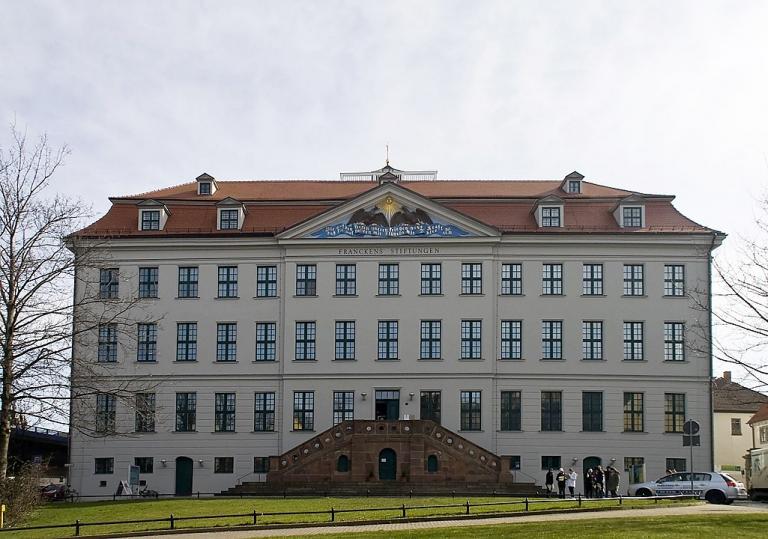
While “a tradition of narrating conversion” was popular among Puritans and other English Protestants by the mid-17th century, historian Jonathan Strom emphasizes that Martin Luther and later Lutherans “were wary of conversion experiences, especially ones that might imply human preparation for grace.” But critics of central European state churches sought a religious experience more vital than the rote reception of word and sacrament. In 1661, Lutheran theologian Theophil Grossgebauer used a second birth analogy to convey the drama of the conversion experience, which comes “not without great struggle and conflict, one that causes greater pain than when a child comes into the world, borne by his mother.” His work was published in Frankfurt am Main, five years before Philipp Jakob Spener was appointed the city’s new head Lutheran preacher.
Just thirty-one years old and eager to see religious renewal, Spener soon befriended a lawyer named Johann Jakob Schütz, who had experienced a dramatic conversion as he studied Scripture. Schütz encouraged Spener to begin meeting with a small group of laypeople for Bible study and prayer. In 1675 Spener published his six “pious desires” for Christian renewal (Pia Desideria), which emphasized religious experience over intellectual assent and urged pastors to preach “plainly and powerfully,” seeking to cultivate “the inner man or the new man.”
Spener’s “Pietism” began to attract followers, none more gifted than August Hermann Francke. A brilliant young scholar, Francke later described himself as going through a wrenching struggle with sin and doubt (Busskampf) that brought him to a turning point in 1687. Falling to his knees one Sunday evening, Francke begged God to save him:
He immediately heard me. My doubt vanished as quickly as one turns one’s hand; I was assured in my heart of the grace of God in Christ Jesus and I knew God not only as God but as my Father. All sadness and unrest of my heart was taken away at once, and I was immediately overwhelmed as with a stream of joy so that with full joy I praised and gave honor to God who had shown me such great grace. I arose a completely different person from the one who had knelt down.
This experience happened in Lüneburg, which Francke took to calling his spiritual birthplace — to distinguish his rebirth from his physical birth in Lübeck. In this 1697 sermon on John 3, he questioned a common Lutheran interpretation of that text: “…baptism is not rebirth, but a bath of rebirth, and a means which God ordered by which to accept people into his covenant of grace; but rebirth or the new creation must occur in our hearts.” Then it shaped the work of the convert’s hands: Francke threw himself into making the city of Halle a center for Pietism, founding institutions for education, health care, publishing, and more.
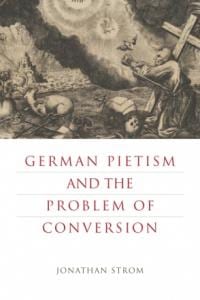 For Francke and other Pietists, writes Strom, “Conversion aimed to distinguish the true Christian from the lukewarm believer, the ardent follower of Christ from the nominal adherent. Yet, almost from the start, conversion experiences and their accounts were fraught with difficulty for Pietists.” Spener preached some sixty-six sermons on the new birth, but he never described his own conversion and may have grown more suspicious of dramatic changes like Schütz’s as the lawyer’s theology grew more radical. Francke told Spener about his own conversion experience in 1692, but asked that it be kept anonymous. And while Francke told that story other times, Strom concludes that it was 19th century writers who “expanded on it, and made it an indispensable feature of Pietism… this emphasis was a departure from common practice during most of Francke’s lifetime and the rest of the eighteenth century, when the details of his Lüneburg experience were not well known, much less deemed a model for conversion.”
For Francke and other Pietists, writes Strom, “Conversion aimed to distinguish the true Christian from the lukewarm believer, the ardent follower of Christ from the nominal adherent. Yet, almost from the start, conversion experiences and their accounts were fraught with difficulty for Pietists.” Spener preached some sixty-six sermons on the new birth, but he never described his own conversion and may have grown more suspicious of dramatic changes like Schütz’s as the lawyer’s theology grew more radical. Francke told Spener about his own conversion experience in 1692, but asked that it be kept anonymous. And while Francke told that story other times, Strom concludes that it was 19th century writers who “expanded on it, and made it an indispensable feature of Pietism… this emphasis was a departure from common practice during most of Francke’s lifetime and the rest of the eighteenth century, when the details of his Lüneburg experience were not well known, much less deemed a model for conversion.”
Indeed, Spener denied that there was any particular pattern for the experience of spiritual rebirth, and warned against taking as normative the most dramatic of the conversion stories published by Pietists in the 1690s:
The accounts of conversion, rebirth, and renewal, which are based on one’s own experience, have this weakness that often Christian hearts, whose nature is right, begin to doubt the truly divine beginnings and fall into deep struggles, because they have not gone through such paths, and consequently want to force themselves to do this or that, which God has not effected in them. [This happens] when the authors do not properly protect the reader and testify that God may have dealt with them in this fashion, but they cannot say that he would deal with all his children in the same way, much less indicate that their encounter would be a rule for others and therefore that everyone must experience things as they have.
“Without question,” Strom concludes, “Pietists yearned for conversion, wrote about it, and preached sermons designed to evoke it, but they privileged no single pattern.” Likewise, evangelicals may continue to practice “the religion of the born again,” but they have no single pattern for it — and should not be surprised to see other Christians using the same biblical language to describe their own religious experiences.



